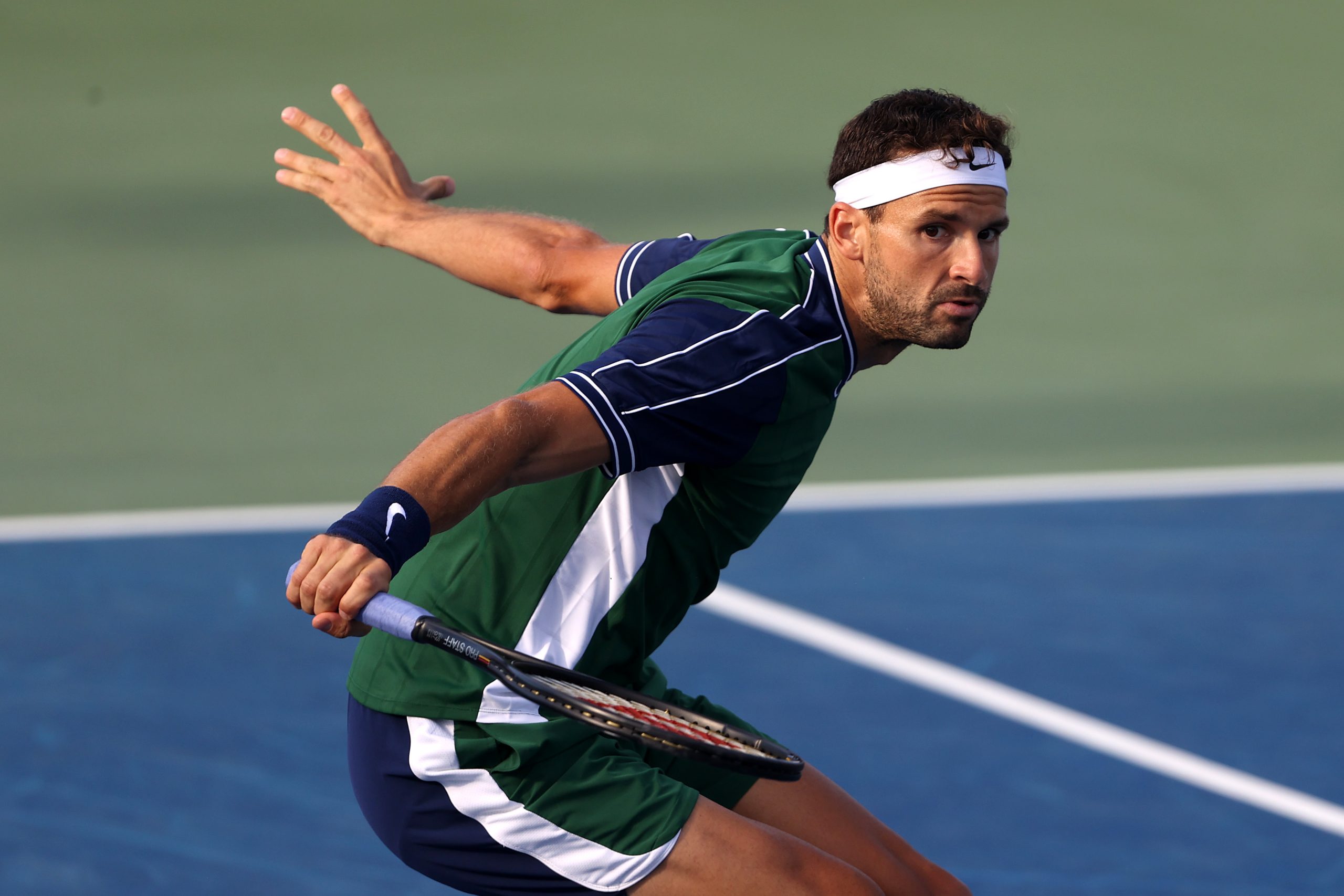Welcome to Tennis Elbow, the column that looks back on the week that was in the world of tennis. This week, Charles Blouin-Gascon recaps Grigor Dimitrov’s performance in Indian Wells.
What a wonderfully perfect microcosm of Grigor Dimitrov’s career the 2021 BNP Paribas Open turned out to be.
The Bulgarian, who is somehow all of 30 (!!!) years old now, arrived in Indian Wells for this Masters 1000 modestly, as the 23rd-seeded player on the men’s side. We like to think that in 2021, it’s a fairly accurate and representative number for the man who’s lived through one or two tennis lifetimes since being hailed as “Baby Fed.”
But hold on, we’ll get there. For now let’s mention that if Dimitrov arrived in Indian Wells as the No. 23-seed, he played far better than that. He first beat Daniel Altmaier, which is whatever, but then he went on a bit of a run. He beat in succession the No. 16-seed Reilly Opelka, No. 1-seed Daniil Medvedev and No. 8-seed Hubert Hurkacz to make the semifinal.
Sure, it was only a Masters 1000 semifinal, but by comparison this matchup against No. 21-seed Cameron Norrie should have been easy—or easier. It wasn’t. Dimitrov, after so much success, lost pretty resoundingly by the score of 6-2 and 6-4. Dimitrov, once the coast was clear for him to perhaps make quite the stand, well he kinda petered out.
We’ve been here before
Mind you, this isn’t surprising for anyone who has kept up with Dimitrov’s career over the years. His game seems to have been custom-made to mimic that of Roger Federer, both in style and flair, but as they say the substance is what’s most important. And for all the beauty of both Federer and Dimitrov’s games, only the former’s had substance.
The Bulgarian managed to reach the World No. 1 ranking as a junior player in 2008 after winning Wimbledon and the US Open, but success in the juniors as indicative of professional success isn’t a foolproof method. Throughout his ATP career, Dimitrov has won eight different titles, including at the 2017 Tour Finals and 2017 Western & Southern Open, has made three Grand Slam semifinals…and basically that’s it.
The best thing you can probably say about Dimitrov is that he has somehow amassed something like $20 million in prize money. If that feels like a lot, it’s because it is. In fact, Dimitrov ranks No. 25th in history for career prize money won. Granted, he’s not the 25th best tennis player in history…but again, we’ll get there.
Is that all his fault?
Dimitrov has spent the years since his success in the juniors being a totally good professional player. He’s won a few titles as mentioned above, and has generally won three matches for every two matches he’s lost. His career-high ranking is No. 3, which he reached in November 2017, but has spent the better part of the last decade hovering between No. 10 and No. 20. Currently, he ranks No. 28.
To do this over the course of 13+ seasons is remarkable. In the grand scheme of things, Dimitrov has enjoyed a great, fine, and superlative career. He’s set for life, and so are his grandchildren and their children.
What we’re getting at here is that Dimitrov’s career has been by and large wonderful. It’s only if and when you compare it to very, very top of the top that it’s seemingly lacking. His career is only lacking when you compare it to the faces on the Mount Rushmore of the ATP. When you compare it to folks like Federer, Rafael Nadal, Novak Djokovic, Pete Sampras, Andre Agassi, and the likes.
But whose career, exactly, is not lacking when you compare it to these players? By and large, Dimitrov is one of the, say, 1,000 best men’s singles players in history. That’s in the absolute worst case scenario. That’s absolutely great, are you kidding me? Dimitrov is an amazing tennis player and he’ll always be.
Who among us?
Who else among us can say the same thing about our profession? (And also, who else among us can say we’ve earned $20 million in prize money?)
Dimitrov didn’t win the Indian Wells battle. But he’s won the war.
Follow Charles Blouin-Gascon on Twitter @RealCBG















